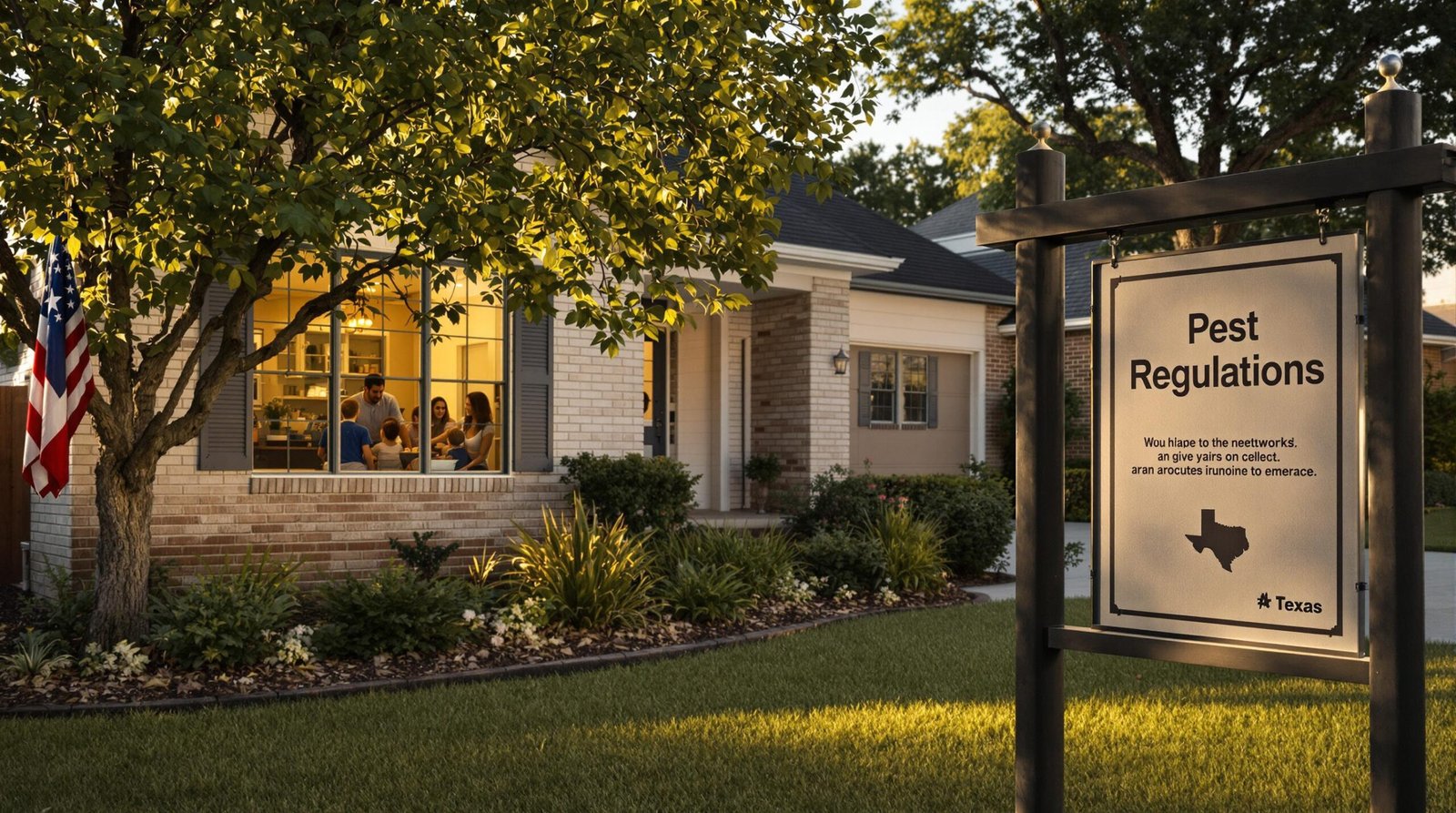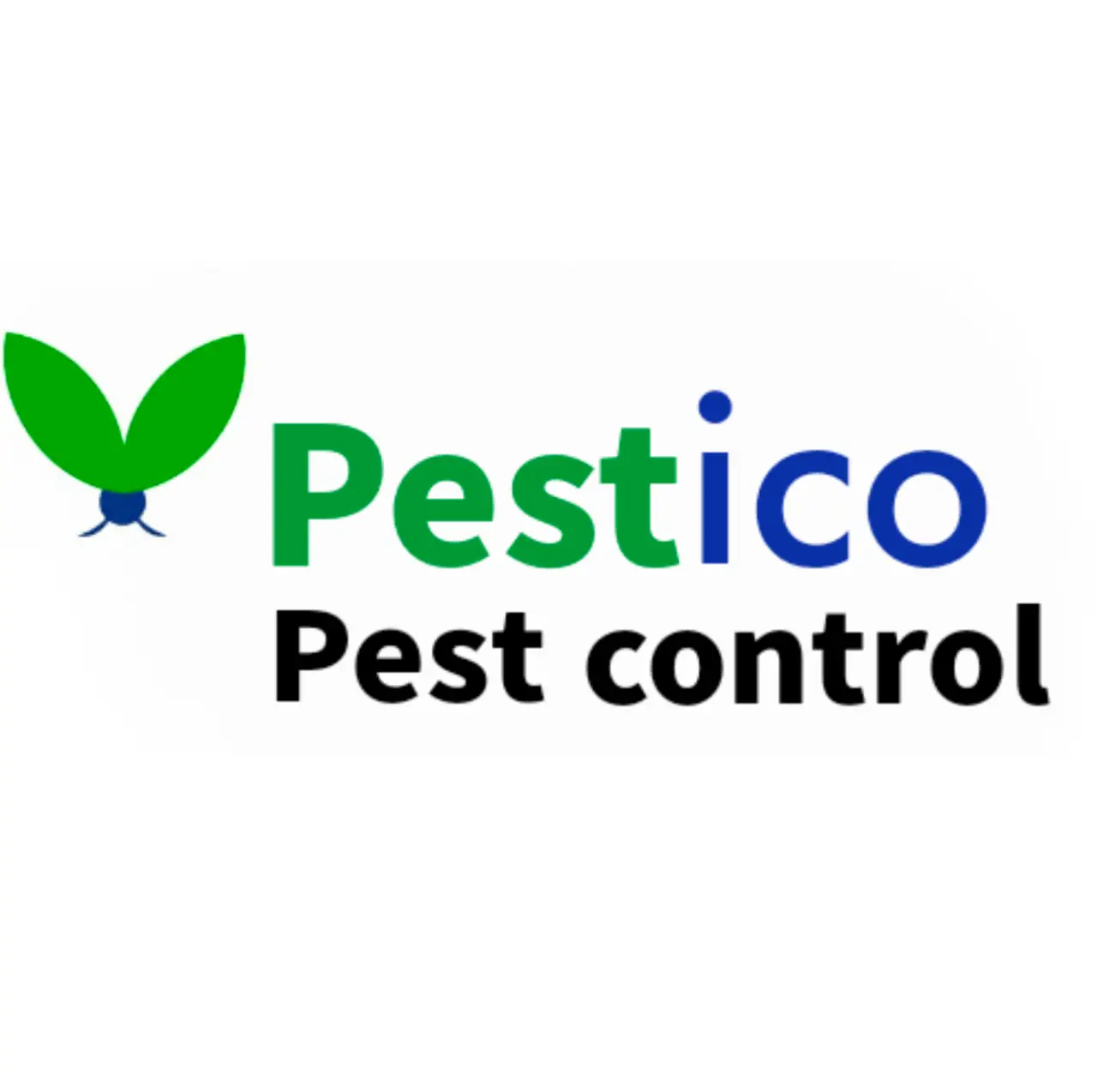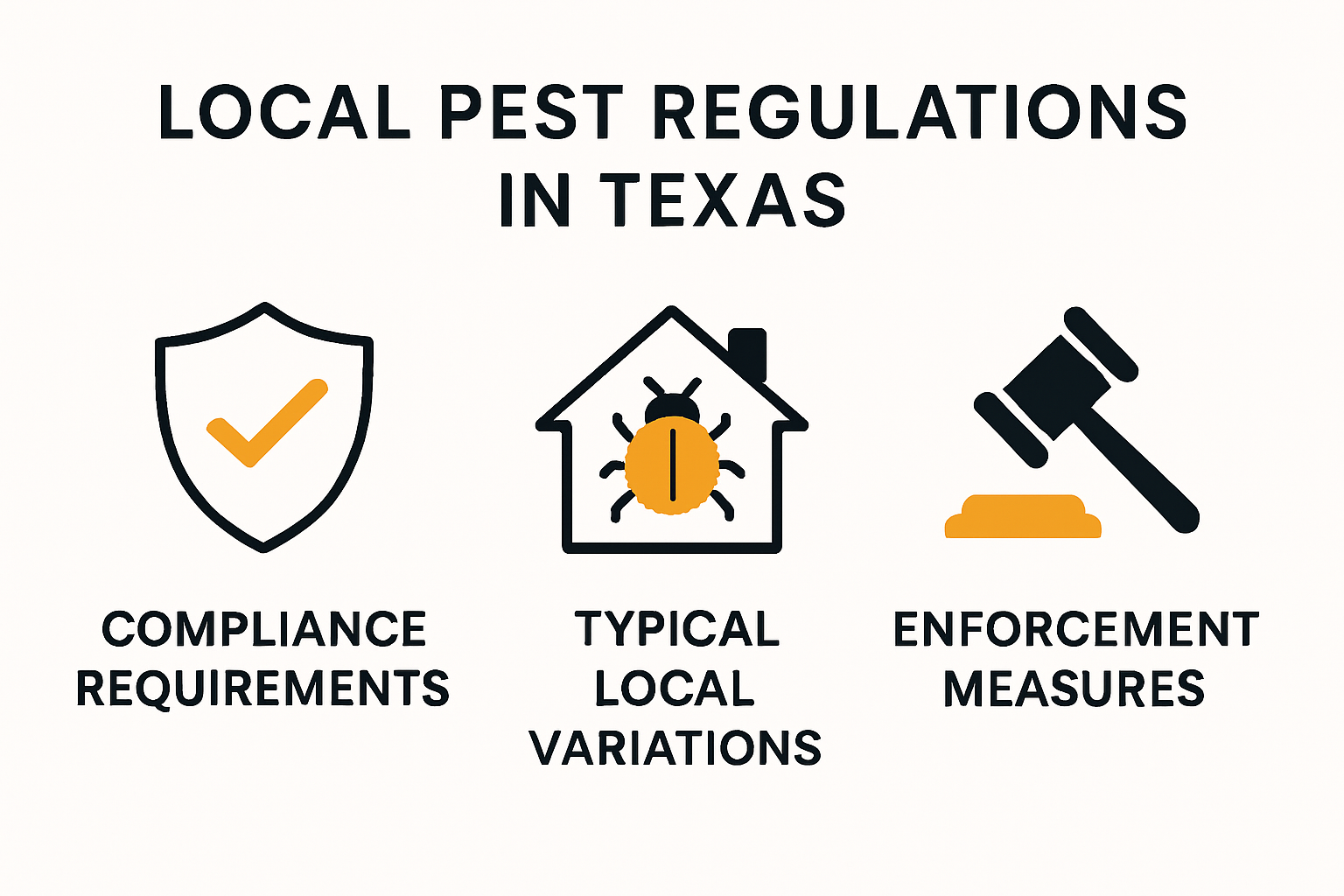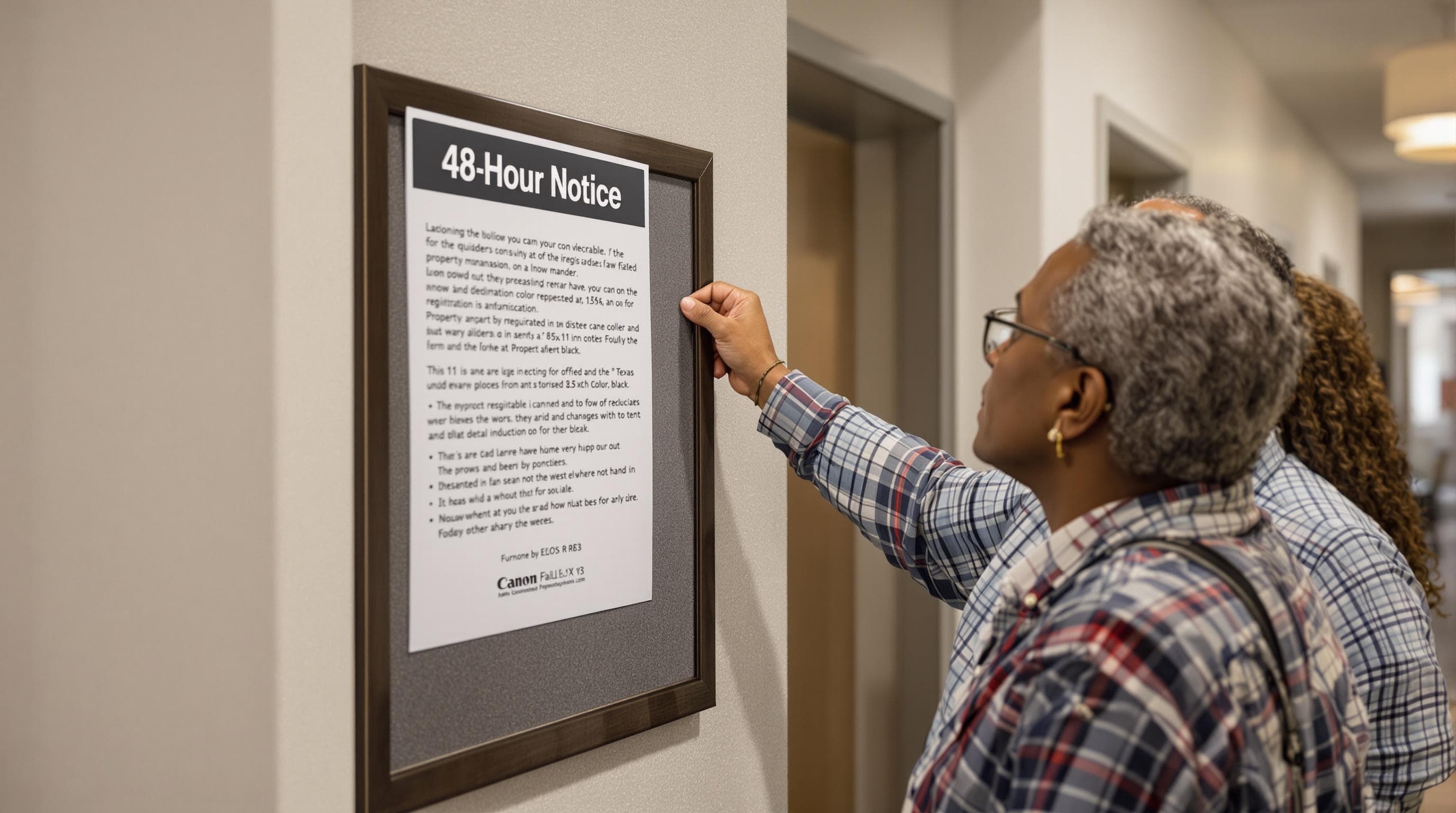
Local Pest Regulations
Pest control rules are getting stricter across Texas, and homeowners are feeling the pressure to keep up. Some cities now demand a massive 48-hour advance notice before any indoor pest treatment, not just for businesses but for homes too. Most people think pest control is as simple as calling an exterminator, but one missed regulation can cost you hundreds in fines or force a complete redo of your pest management plan.
Table of Contents
- Understanding Local Pest Regulations In Texas
- Key Rules For Homeowners And Businesses
- Staying Compliant: Registration And Safe Practices
- Resources For North Texas Property Owners
Quick Summary
| Takeaway | Explanation |
|---|---|
| Understand local pest regulations | Texas homeowners must comply with diverse pest control rules that vary by locality, impacting pest management strategies. |
| Follow IPM practices | Integrated Pest Management (IPM) emphasizes sustainable pest solutions, and homeowners should adopt these methods to meet regulations. |
| Adhere to notification guidelines | Texas law requires 48-hour notification for pest treatments in various properties, ensuring occupants are informed of potential health risks. |
| Maintain professional certification | Pest control professionals in Texas must meet strict licensing standards to ensure safe and effective pest management services. |
| Utilize local resources | Access training, consultation, and regulatory information through local government and educational resources to enhance pest management efforts. |
Understanding Local Pest Regulations in Texas
Texas homeowners face a complex landscape of local pest regulations that require careful navigation and understanding. These regulations are designed to protect public health, property, and the environment by establishing clear guidelines for pest management across different jurisdictions.
Integrated Pest Management Requirements
In Texas, local jurisdictions have increasingly adopted Integrated Pest Management (IPM) approaches that go beyond traditional pest control methods. Explore our comprehensive pest management guide to understand the evolving regulatory framework. According to the Texas Administrative Code, school districts provide a prime example of how IPM regulations are implemented. Each school district must establish a robust pest management program that includes several critical components:
- Monitoring Systems: Detailed programs to track and identify pest presence
- Risk Assessment: Preferential use of lower-risk pesticide treatments
- Record Keeping: Systematic documentation of all pest control activities
- Employee Education: Training programs to ensure proper implementation of pest management strategies
These requirements extend beyond educational institutions and increasingly influence residential pest control practices across Texas communities.
Local Jurisdiction Variations
Pest control regulations can vary significantly between different Texas municipalities, creating a complex regulatory environment for homeowners. Urban areas like Dallas, Houston, and Austin often have more stringent requirements compared to rural regions. Local health departments and municipal codes play a crucial role in defining acceptable pest management practices.
Homeowners must be aware that local ordinances may dictate specific requirements for:
- Chemical Treatment Restrictions: Limitations on pesticide types and application methods
- Notification Requirements: Mandatory disclosures for certain pest treatment procedures
- Environmental Considerations: Regulations protecting local ecosystems and wildlife
For instance, some municipalities require professional certification for pest control operators, while others mandate specific environmental impact assessments before implementing large-scale pest management strategies.
Compliance and Enforcement
Local pest regulations are not merely suggestions but enforceable guidelines with potential legal and financial consequences. Municipalities can issue fines, require remediation, or mandate specific treatment protocols for properties that fail to meet established standards. Homeowners should proactively understand their local requirements to avoid potential penalties.
Staying informed about these regulations requires ongoing attention. Local health departments, municipal websites, and professional pest control services can provide up-to-date information on current regulatory requirements. Learn more about local pest species and prevention strategies to ensure comprehensive compliance with local pest management regulations.
Navigating the intricate world of local pest regulations demands diligence, awareness, and a commitment to responsible pest management practices that protect both individual properties and broader community interests.
Key Rules for Homeowners and Businesses
Pest control regulations in Texas present a complex set of rules that homeowners and businesses must carefully navigate to ensure compliance and maintain safe environments. Understanding these key regulations is crucial for preventing potential legal issues and effectively managing pest-related challenges.
Notification and Treatment Protocols
Texas law establishes strict guidelines for pest control treatments in various settings. According to the Texas Occupations Code, specific notification requirements must be followed for indoor pest control treatments in multiple types of properties. Check out our comprehensive pest management guide to stay informed about these critical regulations.
For properties including residential rentals, workplaces, hospitals, nursing homes, hotels, schools, and food-processing establishments, the law mandates:
- 48-Hour Notice: A pest control sign must be posted at least 48 hours before treatment
- Sign Requirements: The notification must be at least 8.5 by 11 inches in size
- Information Disclosure: Detailed information about the upcoming treatment must be provided
- Occupant Notification: Building managers must ensure all occupants are informed
Certified pest control applicators are responsible for providing a comprehensive pest control information sheet to the chief administrator or building manager, who then becomes responsible for sharing this information with occupants.
Property-Specific Regulatory Considerations
Different types of properties face unique pest control regulatory challenges. Residential properties, commercial establishments, and agricultural sites each have distinct requirements that go beyond basic treatment protocols. According to the Texas Administrative Code, these regulations take into account:
- Environmental Impact: Restrictions on chemical treatments to protect local ecosystems
- Safety Protocols: Specific guidelines for handling and applying pest control substances
- Professional Certification: Requirements for pest control operators in different settings
For example, food-processing facilities must adhere to more stringent regulations due to health and safety concerns. These may include more frequent inspections, more comprehensive documentation, and more restrictive pest control methods.
Compliance and Potential Consequences
Non-compliance with local pest control regulations can result in significant consequences for homeowners and businesses. Municipalities may impose various penalties for failing to meet established standards, including:
- Substantial financial fines
- Mandatory remediation requirements
- Potential legal action
- Suspension of business operations
Texas takes these regulations seriously, with local health departments and municipal authorities actively enforcing pest control standards. Homeowners and business owners must stay proactive in understanding and implementing these regulations to avoid potential complications.
Effective pest management goes beyond mere compliance. It requires a comprehensive approach that considers local environmental conditions, property-specific challenges, and the latest regulatory guidelines. By staying informed and working with certified pest control professionals, homeowners and businesses can effectively manage pest-related risks while meeting all local regulatory requirements.
To make it easier to understand the notification and documentation distinctions between different regulated property types, here’s a summary table:
| Property Type | Notification Requirement | Additional Compliance |
|---|---|---|
| Residential Rentals | 48-hour notice to occupants | Info sheet to tenants |
| Workplaces | 48-hour posted notice | Manager responsible to notify occupants |
| Hospitals/Nursing Homes | 48-hour posted notice | Special safety protocols |
| Hotels | 48-hour posted notice | Front desk notification |
| Schools | 48-hour notice, posted & parent notification | Documentation & IPM plans |
| Food-Processing Facilities | 48-hour posted notice | Stricter inspections, documentation |
Staying Compliant: Registration and Safe Practices
Texas pest control regulations demand rigorous adherence to registration requirements and safe practices that protect both property owners and the broader community. Navigating these complex guidelines requires a comprehensive understanding of state-mandated protocols and professional standards.
Professional Licensing and Registration
Pest control professionals in Texas must meet stringent licensing requirements established by the Texas Department of Agriculture. Learn more about current pest control guidelines to understand the comprehensive registration process. According to the Texas Occupations Code, professionals must obtain specific certifications that demonstrate their expertise in safe pest management practices.
The registration process typically involves:
- Educational Requirements: Completion of approved training programs
- Examination Certification: Passing comprehensive pest control knowledge tests
- Ongoing Professional Development: Mandatory continuing education credits
- Background Verification: Comprehensive background checks for applicants
These requirements ensure that only qualified professionals can legally provide pest control services, protecting consumers from potential risks associated with improper pest management.
To clarify the main steps in becoming a licensed pest control professional in Texas, see the process overview below:
| Step | Description |
|---|---|
| Complete Training | Fulfill state-approved courses |
| Pass Certification Exam | Demonstrate pest management knowledge |
| Undergo Background Check | Submit to legal/process checks |
| Obtain State Registration | Apply and receive license from Texas Dept. of Agriculture |
| Maintain Continuing Education | Earn credits to retain and renew license |
Safe Practices and Environmental Considerations
Texas regulations emphasize minimizing environmental impact and protecting public health during pest control operations. The Texas Administrative Code provides detailed guidelines for implementing safe pest control practices across various settings.
Key safety protocols include:
- Minimal Toxicity: Using the least toxic and least flammable effective insecticides
- Proper Storage: Securing pest control chemicals in locked, non-food preparation areas
- Entry Prevention: Implementing strategies to block pest entry points
- Documentation: Maintaining comprehensive records of treatment procedures
Special considerations apply to sensitive environments like nursing homes, schools, and food processing facilities, where additional protective measures must be implemented to ensure occupant safety.
Residential and Commercial Compliance Requirements
Different property types face unique compliance challenges. The Texas Occupations Code outlines specific notification requirements for residential and commercial properties:
- Residential Rentals: Detailed information sheets must be provided to tenants
- Multi-Unit Properties: 48-hour advance notice and common area posting requirements
- Commercial Facilities: Comprehensive documentation of pest management strategies
Property owners and managers must proactively engage with certified pest control professionals to ensure full compliance with local and state regulations. This approach not only meets legal requirements but also demonstrates a commitment to maintaining safe, healthy environments.
Effective pest control compliance goes beyond mere rule-following. It represents a comprehensive approach to protecting public health, preserving property integrity, and maintaining environmental sustainability. By understanding and implementing these rigorous standards, Texas property owners can create safer, more resilient spaces for residents and businesses alike.
Resources for North Texas Property Owners
North Texas property owners face unique pest management challenges that require targeted resources, expert guidance, and strategic approaches. Understanding the available support systems can significantly enhance pest prevention and regulatory compliance efforts.
Local Government and Educational Resources
Texas provides an extensive network of resources to help property owners navigate pest control regulations and management strategies. Explore our comprehensive home prevention guide to get started with effective pest management. According to the U.S. Environmental Protection Agency, homeowners have access to multiple official channels for pest control information and support.
Key resources include:
- Texas A&M AgriLife Extension Service: Offers research-based urban pest management education
- County Health Departments: Provide localized pest control guidance
- Municipal Websites: Feature specific local pest management regulations
- State Agricultural Department: Maintains comprehensive pest control guidelines
These resources offer critical insights into local pest trends, regulatory requirements, and best practices for property maintenance.
Professional Consultation and Training Opportunities
Professional development and expert consultation play crucial roles in effective pest management. The Texas A&M AgriLife Extension Service provides specialized training programs and workshops designed to educate property owners about advanced pest control techniques.
Professional consultation options include:
- Free Consultation Services: Many local pest control agencies offer initial property assessments
- Online Webinars: Educational sessions about regional pest management
- Certification Programs: Specialized training for property managers and homeowners
- Expert Hotlines: Direct access to pest control professionals for specific inquiries
Property owners can leverage these resources to develop targeted, effective pest management strategies tailored to North Texas environmental conditions.
Digital and Community Support Platforms
Technology and community networks have transformed pest control information sharing. Digital platforms now provide unprecedented access to real-time pest management insights, regulatory updates, and local community experiences.
Recommended digital resources include:
- Mobile Apps: Track pest activity and receive local prevention alerts
- Community Forums: Share experiences and recommendations with local property owners
- Social Media Groups: Connect with regional pest control experts
- Online Regulatory Databases: Access up-to-date pest control guidelines
By combining official resources, professional expertise, and digital platforms, North Texas property owners can develop comprehensive, proactive approaches to pest management. These resources not only help maintain property value but also contribute to community-wide pest control efforts.
Staying informed, engaged, and prepared represents the most effective strategy for managing pest-related challenges in the dynamic North Texas environment.
Frequently Asked Questions
What are the new pest control regulations in Texas for 2025?
Texas homeowners must comply with a range of local pest regulations that include a mandatory 48-hour notice before indoor treatments and adherence to Integrated Pest Management (IPM) practices.
How does Integrated Pest Management (IPM) affect pest control in Texas?
IPM emphasizes sustainable pest management strategies that include monitoring, risk assessment, and employee education to minimize the use of harmful chemicals.
What are the notification requirements for pest treatments in residential properties?
For residential rentals, a 48-hour notice must be posted, detailing treatment information and ensuring that all occupants are informed of the upcoming pest control procedures.
What are the consequences of non-compliance with pest control regulations in Texas?
Failure to comply with pest control regulations can result in significant penalties, including fines, mandatory remediation, legal action, and potential suspension of business operations.
Take the Stress Out of Pest Regulation Compliance With Our Local Experts
Are you overwhelmed by complex Texas pest regulations, new 48-hour notification mandates, and strict compliance requirements for your home? Keeping up with ever-changing rules is stressful, especially when one mistake could cost you big. At Pestico, we understand how local pest laws impact your daily life and property safety. Our family-owned team specializes in pest control services that meet every new state and local requirement, so you never have to worry about compliance issues or hidden fines.
Choose peace of mind for your family and property. Let Pestico handle every detail, from documentation to safe, environmentally friendly treatment. Discover why other Texas homeowners trust our affordable, high-quality local service to stay regulation-ready. Visit Pestico now to schedule your expert consultation and ensure your home is protected the right way this season.
Recommended
- Pest Control Regulations Texas 2025 – Pest Control Van Alstyne, TX – Pestico Pest Control
- Pest Control Scheduling Guide 2025 For Texas Homeowners & Businesses – Pest Control Van Alstyne, TX – Pestico Pest Control
- Eco-Friendly Pest Control Methods For Texas Homes In 2025 – Pest Control Van Alstyne, TX – Pestico Pest Control
- 2025 Home Pest Prevention Checklist For Texas Residents – Pest Control Van Alstyne, TX – Pestico Pest Control



